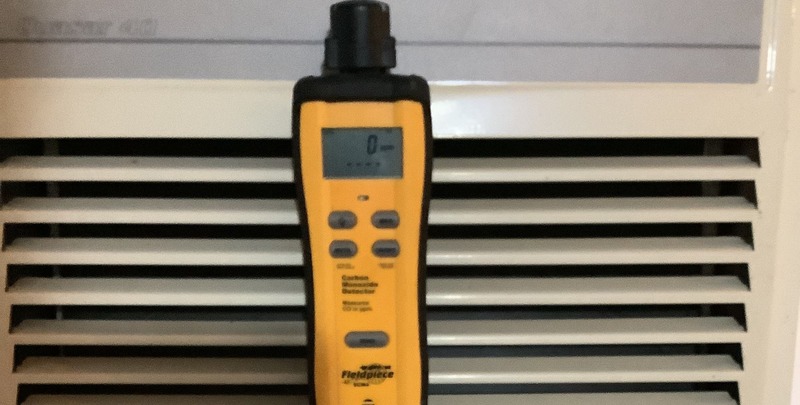
What is a Wall Furnace?
Wall furnaces, also known as wall-mounted or in-wall gas heaters, offer a unique heating solution different from traditional central heating systems or standalone space heaters.
Let’s discover the world of wall furnaces, uncovering their space-saving design, energy-efficient operation, and the various types of economical heating available.
Definition of a Wall Furnace
A wall furnace can be an innovative and versatile choice when heating your home efficiently and effectively.
Whether you’re looking to warm a single room or two rooms, supplement your existing heating system, or heat specific zones in your home, understanding what a wall furnace is and how it works is the first step in making an informed decision about your heating needs.
How Wall Furnaces Work
Wall furnaces operate on the principle of convection heating, a process that efficiently warms the air in a room. Understanding how wall furnaces work is essential to appreciate their effectiveness in providing localised heating.
Here’s a detailed explanation of their operation:
- Air intake: The process begins with the wall furnace drawing in cool air from the room through a vent or grille on the front of the unit. The wall furnace is typically installed near floor level and often circulates this air.
- Heat source: The heat source can vary depending on the gas wall heater or furnace type. Gas wall furnaces utilise natural gas or propane as their fuel source, while electric wall furnaces use electricity to generate heat. In both cases, the stove situates the heating element.
- Heating the air: The cool air inside the wall furnace passes over or through a heat exchanger. A gas burner heats this heat exchanger in gas wall furnaces, while electric heating elements heat it in electric models. As the air circulates through the heat exchanger, it rapidly warms up.
- Circulation: The wall furnace’s fan or blower starts to operate once the air reaches the desired temperature. This fan forces the warm air out of the unit and into the room through a separate vent or grille, typically at the team’s top. The warm air rises naturally due to convection currents spreading throughout the room.
- Continuous process: The wall furnace continues to draw in cool air, heat it, and circulate the warm air into the room until the thermostat senses fresh air has reached the desired temperature. The furnace cycles off once it achieves the set temperature and cycles on again when the temperature drops below the set point.
Wall furnaces are designed to provide consistent and even heating, creating a comfortable environment within the room, which is essential to note. They are particularly effective for maintaining a steady temperature in spaces not installed inside.
In addition to their convection heating process, wall furnaces are known for their space-saving design, making them an excellent choice for homes with limited space or for targeted heating in specific zones. Their ability to have two heaters deliver efficient, zonal heating while minimising energy consumption makes them popular among homeowners looking to enhance their heating systems.

Types of Wall Furnaces
Wall furnaces come in various types, each with unique characteristics and fuel sources. Understanding the different kinds of wall furnaces is crucial when choosing the one that best suits your heating needs.
Here, we’ll explore the primary types:
- Gas wall furnaces:
- Natural gas: Natural gas powers these wall furnaces, a cost-effective and readily available fuel source in many areas. Natural gas wall furnaces are highly efficient and provide quick and reliable heating.
- Liquefied petroleum gas (LPG): LPG wall furnaces are similar to natural gas models but use propane as their fuel source. They are an excellent option for homes needing natural gas supply access. Tanks on the property typically store LPG.
- Electrical wall furnaces: Electric wall furnaces use electrical resistance heating elements to generate heat. They are easy to install and do not require venting, making them versatile for various room configurations. People often use electric wall furnaces in homes where gas is not an option or as a supplementary heating source.
- Ventless wall furnaces: Ventless wall furnaces, also known as vent-free wall furnaces, are unique and do not require external venting. Designers have created them to operate in a closed environment, recirculating the air within the room. Ventless models are highly efficient and heat the space quickly. However, users must use them in well-ventilated areas and follow specific safety requirements.
- Direct vent wall furnaces: Direct vent wall furnaces are safer for homes concerned about indoor air quality. They have a sealed combustion chamber and draw in outside air for combustion while expelling exhaust gases directly outside. It prevents combustion byproducts from entering the room, ensuring better indoor air quality.
- Gravity wall furnaces: Gravity wall furnaces operate without the need for a fan or blower. Instead, they rely on the natural buoyancy of warm air to distribute heat. Cool air is drawn in from the room, heated within the furnace, and rises, creating a gentle circulation of warm air to the adjoining room. While energy-efficient, they may not provide as rapid heating as fan-assisted models.
- Hydronic wall furnaces: Hydronic wall furnaces use water or a water-based solution as a heat transfer medium to warm the surrounding air. They are typically part of a more extensive hydronic heating system and are known for their energy efficiency and even heating distribution. People often use these systems in homes with radiant heating or baseboard systems.
- Infrared wall furnaces: Infrared wall furnaces use infrared radiation to cts and people in a room directly. They do not warm the air but provide an instant warmth when you are in their line of sight. Infrared wall furnaces are energy-efficient and can be a good choice for targeted heating in specific areas.
Each type of wall furnace has its own set of advantages and considerations, including factors like installation requirements, energy efficiency, and fuel availability. When selecting a wall furnace for your home, you must consider your specific heating needs, budget, and existing infrastructure to determine the most suitable type for your situation.

Advantages of Wall Furnaces
Wall furnaces offer several advantages, making them an attractive heating option for many homeowners. In this section, we’ll explore these benefits in detail, highlighting why wall furnaces are a popular choice:
- Space-saving design: One of the standout advantages of wall furnaces is their space-saving design. Install units specifically designed on the wall, often near floor level. Homeowners can reclaim valuable floor space that might otherwise be occupied by other heating appliances or furniture using this installation method. As a result, wall furnaces are an ideal choice for smaller rooms or homes with limited space, such as apartments, condos, or compact living spaces.
- Energy efficiency: Wall furnaces are known for their energy efficiency. They operate on localised heating, which means they only heat areas where warmth is needed. Unlike central heating systems that warm the entire house, wall furnaces focus their heating capacity on specific rooms or zones. Its targeted approach significantly reduces energy wastage, reducing utility bills and reducing environmental impact. Homeowners can also have better control over their energy consumption by heating only the rooms in use.
- Zone heating: Zone heating is another crucial advantage of wall furnaces. These units allow homeowners to customise the temperature in different areas of their homes. This flexibility is precious in homes with varying heating needs. For instance, you can keep your living room warm and cosy during the evening while maintaining lower temperatures in unused rooms or spaces. Zone heating ensures that you can create a comfortable environment while minimising energy usage in areas that are not in use.
- Installation and maintenance benefits: Wall furnaces offer installation and maintenance benefits, making them a practical choice for many homeowners. The installation process is relatively straightforward, and these units are typically more manageable and less expensive than central heating systems. Maintenance requirements are also minimal, with routine tasks such as cleaning or replacing air filters and checking blockages. This simplicity can save costs during installation and over the long term.
- Supplemental heating: In addition to being a primary heating source, wall furnaces can serve as effective supplemental heating. You can install a wall furnace to address those cold spots in your home if your central heating system doesn’t adequately warm specific areas. This approach optimises your heating system and enhances comfort without significant modifications.
Wall furnaces offer versatility, making them suitable for various applications, from providing primary heating in smaller homes to serving as an efficient supplemental heat source in larger residences. Their space-saving design, energy efficiency, zonal heating capabilities, and ease of installation and maintenance make them a practical choice for homeowners looking to improve their heating systems.
Demystifying the Wall Furnace
Exploring the wall furnace, we’ve uncovered a versatile heating solution that seamlessly integrates into homes, providing efficient warmth with a space-saving design.
Whether powered by gas or electricity, wall furnaces offer homeowners a convenient and discreet option for maintaining a comfortable indoor climate.
However, it is crucial to acknowledge the importance of professional guidance and assistance concerning wall furnaces. Whether it’s installation, maintenance, or repairs, hiring experienced professionals ensures these heating units’ safe and optimal functioning.
In the world of wall furnaces, where efficiency and safety go hand in hand, relying on experts guarantees a warm and secure home environment for all.
Please note: This information is provided for advice purposes only. Regulations differ from state to state, so please consult your local authorities or an industry professional before proceeding with any work. See our Terms & Conditions here.
Published: 7 May 2024